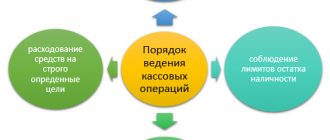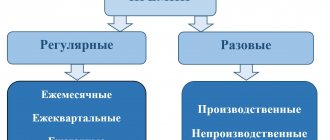Astral
September 27, 2021 7916
Lifehack
Charity has long become the norm for many people. Unfortunately, there are people and organizations that need help. Therefore, many entrepreneurs donate money or necessary items to foundations, schools and other organizations. However, the accountant must correctly account for all “good” expenses.
What is included in the concept of charitable assistance?
According to the aforementioned Federal Law No. 135, charitable assistance is any assistance provided on a voluntary basis in the form of:
- transfer (transfer) of money;
- transfer of property, goods, products;
- work performed (services provided);
- transfer of rights to intangible assets;
- other voluntary means of support.
How to use a charitable donation ?
Not every gratuitous operation can be recognized as charity. In particular, the following forms of gratuitous donation are not recognized as charitable assistance:
- Giving. Such an agreement is concluded according to the rules of the Civil Code of the Russian Federation, Ch. 32. You can give things or property rights as a gift; in addition, exemption from property obligations is also considered a gift. Monetary donation (within the meaning of Article 128 of the Civil Code) can also take place. The concept of “charity” includes not only the fact of donation itself, but also the preferential conditions accompanying such a gratuitous transfer. In addition, gratuitous work and services are also classified as charity, while “gifting” a service (work), according to the law, is impossible. Donations also include donations of goods for purposes beneficial to society (Article 582-1 of the Civil Code of the Russian Federation).
- Sponsorship. In the course of providing such assistance, for example, when organizing public events, the sponsor receives benefits in the form of advertising of its brand or products, i.e. essentially provides assistance for a fee.
On a note! The question of whether a charitable transfer is classified as a gift transaction has not been fully regulated. For example, the Federal Antimonopoly Service of the Moscow Region, by its resolution No. A40-42066/12-11-389 dated 06/12/12, states that the norms of the Civil Code of the Russian Federation are applicable to charity.
What is charity
Charity is voluntary assistance provided by legal entities and individuals to any other person. The form varies:
- transfer of property and funds;
- performing work or services free of charge;
- other support.
The goals of charitable activities are established by law.
For example, you can help the low-income, unemployed and disabled. In charity there are always two participants: someone provides help, and someone receives it. The legislation divides everyone into three categories:
- Philanthropists
are those who “unselfishly transfer property or funds into ownership.” This also includes the provision of services. - Volunteers
are individuals who perform work and provide services for free. In other words, these are volunteers and volunteer organizations. - Beneficiaries
are those who receive help from philanthropists and volunteers.
Accounting and taxes
The accounting of charitable contributions reflects their type: property, cash, provision of services, etc. In addition, accounting is the basis for calculating tax indicators.
a gratuitously received charitable donation (charitable contribution) reflected
According to PBU 10/99 (clause 12), charitable contributions are recorded in account 91 as other expenses. In the accounting system, the “input” VAT on charity is taken into account, but in the accounting system it is not, which leads to the emergence of tax differences and PIT. Liabilities are calculated by multiplying the tax difference by the income tax rate (PBU 18/02).
For current payments on contributions, benefactors usually use account 76, with the opening of a corresponding sub-account.
Postings:
- D 76 K 51, 50 – transfer, transfer of money for a charitable contribution.
- D 76 K 41, 10, 01, etc. – transfer of materials, goods, property for charity.
- Dt 76 Kt 20, 23, etc. – provision of services, performance of work for charity.
- Dt 76 Kt 60 - the company purchased inventory items, services and transferred them to a third party as a charitable contribution.
- Dt 91 Kt 76 – material assets and money, work are taken into account in other expenses for charity.
- Dt 91 Kt 68 – VAT charged.
- Dt 99 Kt 68 – reflected PNO from the value of money, inventory items, etc.
These are standard entries in the benefactor's accounting.
Are charitable expenses taken into account for income tax purposes ?
Now let's look at the nuances of providing such assistance and reflecting it in accounting. Charity, as a business transaction, is not subject to VAT (Tax Code of the Russian Federation, Article 149-3, paragraph 12). It should be borne in mind that the Tax Code directly indicates compliance of activities with Federal Law No. 135.
If a fixed asset that is not classified as an excisable asset is transferred as a charitable contribution, the VAT on it should be restored and charged to other expenses (Tax Code of the Russian Federation, Article 170-3, paragraph 2). VAT on “charitable” non-excise fixed assets is calculated at the residual value, using the appropriate interest rate.
Charity is also not taken into account in the tax base for income tax, simplified tax system (Tax Code of the Russian Federation, Art. 270-16, Art. 346.16-1), i.e. Such expenses cannot be recognized by the benefactor.
So, if a previously purchased OS has a residual value of 180,000 rubles and should be donated to charity, you need to make the following entries:
- Dt 91-2 Kt 01 180,000 rub. — fixed assets were disposed of at residual value.
- Dt 19 Kt 68 32400 rub. (180000*18%) – VAT has been restored. From 2019, a basic tax rate of 20% will apply, which should be taken into account in your calculations.
- Dt 91/2 Kt 19 RUR 31,400 — the restored VAT is reflected in other expenses.
- Dt 99 Kt 68 RUR 36,000 — PNO was recorded (180,000*20%).
Donations as a type of charitable assistance
Donations mean the provision of free assistance to those in need, as well as to solve social problems. The main subject of gratuitous transfer is cash, but it can also be fixed assets (cars, equipment, furniture) and other material assets (clothing, household items, medicines, etc.)
The transfer of donations can be made by both an individual (private charity) and a company (charitable corporate projects and foundations).
The legislation defines the goals according to which charitable assistance is provided in the form of donations. Among them:
- support for the poor;
- assistance to citizens who are not able to independently exercise their civil rights (for example, people with disabilities);
- assistance to victims of natural disasters;
- assistance to victims of armed conflicts.
Participants in charitable activities are persons receiving assistance in the form of donations (beneficiaries), as well as persons giving such donations free of charge (beneficiaries).
Personal income tax
IMPORTANT! A sample agreement for the implementation of free charitable activities by a benefactor - a legal entity from ConsultantPlus is available at the link
Personal income tax and charity are a special case that is worth considering in more detail. Tax Code of the Russian Federation, art. 217-8.2, indicates that accepted charitable assistance is not subject to income tax, however, with one clarification: it must be received through a charitable organization (most often we are talking about a charitable foundation - BF).
Assistance received from an organization not named in Federal Law-135 (Article 6-1) is subject to personal income tax. The tax will have to be calculated and withheld.
On a note. A citizen providing charitable assistance can apply to the tax office for a deduction (Tax Code of the Russian Federation, Art. 219-2), since such assistance is exempt from income tax (ibid., clause 1). The deduction is provided only for contributions made through a specialized organization. The deduction is provided in the amount of no more than a quarter of all income subject to taxation for the year.
VAT on disposal of fixed assets as charitable donation
According to sub. 2 p. 3 art. 170 of the Tax Code of the Russian Federation, the tax must be restored if the fixed asset will be used in transactions that are not subject to VAT. Charity is considered to be such an operation according to subparagraph. 12 clause 3 art. 149 of the Tax Code of the Russian Federation - the main thing is that charity activities comply with the law 135-FZ and the asset is not excisable.
To calculate the amount of VAT related to retired fixed assets or intangible assets that must be restored, you need to calculate the residual value of the object and take the corresponding VAT percentage from it. The proportional calculation applies only to the indicated two types of assets; for other assets, the tax is fully restored. The restored VAT is charged to other expenses (subclause 2, clause 3, article 170 of the Tax Code of the Russian Federation).
You can learn about various situations for VAT recovery from our section “Procedure for VAT recovery (postings)”.
All typical risks that a charitable foundation may encounter in its activities are collected in a single review material in ConsultantPlus. Learn the information by getting free trial access to the system.
Consequences of canceling a donation
Based on the above, it can be argued that a court decision canceling a donation as a legal fact should also cancel the legal consequences that arose as a result of the conclusion of the transaction, which will be one of the main consequences of canceling the donation. Thus, when canceling a donation, the norms of paragraph 5 of Art. 578 Civil Code.
According to this norm, the donee will be obliged to return all property benefits previously transferred to him that have been preserved in kind. It is noteworthy that the legislator does not regulate any other forms of compensation other than the return of preserved benefits in kind. It follows from this that in the event of the actual loss of the donated property benefit and the subsequent cancellation of the transaction, the donor has no right to demand monetary compensation the donee, except in cases of intent by the donee aimed at excluding the subsequent return to the donor of the benefits received from him.
This approach is not correct, since the cancellation of the donation (i.e., its annulment) should entail similar consequences with the recognition of the transaction as invalid, i.e., the return of everything received. However, depending on the situation, in addition to the return of the donated good retained in kind, compensation for losses due to unjust enrichment by the donee .
The logic of this conclusion is quite clear - the cancellation of a donation presupposes its cancellation, which, in turn, presupposes the return of the benefits to their original positions - the property of the donor. If their return in kind is impossible, then the benefits unreasonably remain in the property of the donee .
Attention
Based on this, the provisions of Art. 1105 of the Civil Code of the Russian Federation, according to which, if it is impossible to fully compensate in kind for an unjustifiably received benefit, its acquirer compensates the victim (donor) for the value of this property at the time of its receipt, as well as losses incurred as a result of a change in its value.
Thus, at the stage of canceling the donation, the donor should, even before a court decision is made, request full in-kind or material compensation for the property benefits transferred to him.
Procedure and accounting of donations to a non-profit organization
4531 Donations can be accepted by organizations, the list of which is approved in the Civil Code of the Russian Federation in Art.
We recommend reading: How do messengers make money?
582. These include medical organizations, educational institutions, enterprises specializing in social services, charity, development of science, culture, religious structures and other types of NPOs (non-profit organizations). differ from other business entities in that for them making a profit is not the goal or reason for creating an enterprise; their purpose is to implement socially useful tasks. To carry out a transaction to donate certain resources to a non-profit organization, it is necessary to draw up an agreement.
In the agreement, the donor indicates for what purposes the property benefits are transferred in favor of the NPO.
The goals specified in the contractual documentation must be consistent with the specialization of the non-profit organization.
The recipient undertakes to use the received assets only for the prescribed purpose. Civil law (Article 582 of the Civil Code of the Russian Federation)
Tax accounting for amounts received free of charge
Enterprise finances received as a gift are subject to special taxation. VAT is required to be paid only in cases where:
- the organization uses the received goods for further sale;
- donated products are excisable;
- assistance is provided in the form of goods, services or works, as well as fixed assets and intangible assets, which will then be transferred to third parties.
Donated amounts, as a rule, are included only in the calculation of the beneficiary’s income tax, and VAT is not paid on the funds. The enterprise receiving assistance is obliged to take it into account when calculating income tax if at least one of the conditions is violated:
- its initial capital consists of 50% or more of the contribution of the benefactor;
- The authorized capital of the organization providing assistance consists of 50% or more of the contribution of the beneficiary.
Thus, only financial assistance from the founder is not included in the calculation of income tax. If the funds were received from third-party legal entities or individuals, the beneficiary is required to include the amount in the calculation of income tax.
In cases where the party receiving assistance is an individual, personal income tax must be paid.
AP IT Co.
One of the main elements of accounting in charitable non-profit organizations is accounting for donations .
Donations can come in both cash and non-cash forms. In the “1C for non-profit organization” , this accounting is carried out using the documents “Receipt to current account” and “Cash receipt order”. At the same time, appropriate entries are generated in the accounting records of the non-profit organization.
In the “1C Accounting for a Non-Profit Organization” program, the documents “Receipt to the current account” and “Cash receipt order” have the same appearance and functionality as in the regular “1C: Accounting” with the following exceptions
- 1) Availability of a field for entering the source of funding. Selection from the directory NPO_Sources.
- 2) In the list of types of operations there is the option “Targeted receipts”. The choice of this item determines the behavior of the document during posting and, as a result, the formation of transactions
Otherwise, the accounting documents of an NPO are identical to the accounting documents of a commercial organization.
When donations are received in non-cash form, in any case, a posting is generated according to Dt 51 or account 52 if the receipt is in foreign currency. When arriving in cash – Dt50.01.
The main question asked by users of 1c accounting programs for non-profit organizations is which account to put on credit
.
There are two main ways of thinking about this question.
Accounting for donations as targeted funding
As a settlement account in the documents, you can indicate, for example, any subaccount from 86
- 86.01 “Targeted financing from the budget”
- 86.02 “Other targeted financing and revenues”
- 86.03 “Other targeted financing and foreign currency receipts”
To correctly generate transactions, you must fill in all sub-accounts for the selected account
- Purpose of targeted funds
- Movements of target funds
- Projects
But it is possible to specify accounting details only if the “Operation Type” is set to “Other Receipt”.
Thus, at the moment the donations are received and the transaction is reflected in the 1C: Accounting for a Non-Profit Organization program, you can immediately distribute the amount to specific programs and purposes of use.
As a result, you will get wiring
- For a cash document - Dt 50.01 – Kt 86.02
- For a bank document – Dt51 – Kt 86.02
Moreover, when performing the regulatory procedure “Closing the month” in 1C and when closing the cost account “26.02 General non-commercial”, the posting Dt 86.02 – Kt 26.02
in accordance with the project cost distribution settings.
It would seem that this method of accounting for donations in 1C is convenient. However, there are several but:
- When donations are received, it is not always immediately possible to distribute these funds for projects and intended use
- With such a reflection of the donation transaction in 1C Accounting, you lose information about mutual settlements with donors - who contributed money and how much.
Donations as a settlement with the donor
Therefore, there is another method for reflecting donation transactions in 1C Accounting for Nonprofit Organizations.
The method consists of using the account “76.86 - Accrual of target financing funds in rubles” and simultaneously indicating the type of operation “Target receipt” in the documents “Receipt of non-cash funds” and “Cash receipt order”.
With this combination of parameters, in the donation receipt document you indicate
- Counterparty. From whom did the donations come?
- Agreement. From the contract directory, the donation contract itself. In this case, of course, there may not be a real paper contract. For example, in the case of donations from the public.
- "Cash flow item"
As a result of posting the document, we receive a posting of the form
- For a cash document - Dt 50.01 - Kt 76.86
- For a bank document – Dt51 – Kt 76.86
At the same time, information about donors is stored and accumulated in our accounting records.
The question immediately arises
– how to distribute funds for intended use within projects.
To solve this problem, the “1C Accounting for Non-profit Organizations” program contains the document “Accrual of sources of targeted financing”. In the tabular part of the document “Accrual of sources of targeted financing” you need to add rows and indicate the information:
- Counterparty. Information about the benefactor
- Agreement. Donation agreement
- Sum
- Account for accrual of sources of targeted financing. The subaccount of account 86 is indicated
- Filling out the information “Assignment of target funds”, “Movement of target funds”, “Projects”
When posting this document, transactions of the type Dt 76.86 – Kt 86.02
.
As a result, we close the account for mutual settlements with the benefactor and accrue sources of targeted funding.
Still have questions?
Call tel.: (495) 565-35-66,
Tax accounting of gratuitous assistance
Providing financial support to other legal entities is regulated not only by accounting standards, but also by the instructions of the Tax Code of the Russian Federation. The main tax payments levied on amounts of property assistance are VAT and income tax.
Legislation in force in 2021 requires enterprises that provide gratuitous financial assistance to allocate funds from their net profits. According to the Tax Code of the Russian Federation, expenses associated with charity and targeted contributions are not included in the calculation of the taxable base.










